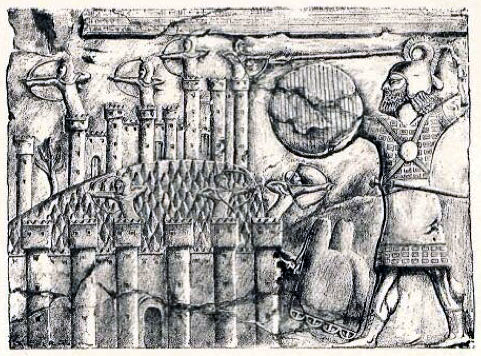“Third Space” in the postmodern geography of Edward Soja is an approach built on Henri Lefebvre’s theory of specific “modes of production of spaces”. Lefebvre distinguishes a perceived, a represented and a lived space (espace perçu, espace conçu, espace vécu).
Research

Taking of a town in Urartu by the Assyrians | Drawn by Faucher-Gudin, from the drawing by Botta | Source: G. Maspero, History of Egypt, Chaldea, Syria, Babylonia and Assyria, transl. M.L., McClure, Band VII, C, 1903 www.gutenberg.org
Our dominant, everyday notion of space as perceived is closest to Lefebvre’s espace perçu, while the planned space of urban planners or architects is an espace conçu. Edward Soja’s works, the basis for this project, modifies Lefebvre’s ideas in a terminological and a conceptual way: the planned space is a “second” space, while the practiced, constantly renegotiated space of identity displacement is a “third space”. Soja diverges from Lefebvre when he suggests that the production of Thirdspaces is mainly the purview of marginal groups. Thirdspace is a space in-between, which refers specifically to subalterns and disenfranchised people and discusses the production of space as an element of collective, but fluid identities. As the archaeologist Swenson observes, Thirdspaces are “places of becoming and self-awareness, sites where identities are forged and contested”.
As a case study of “Thirdspaces” in ancient times, Vera Egbers investigated in her dissertation (B-5-4-1) Thirdspace in Assyria and Urartu the situation of two antagonistic early first millennium BCE powers, Assyria and Urartu, both located in northern Mesopotamia.
